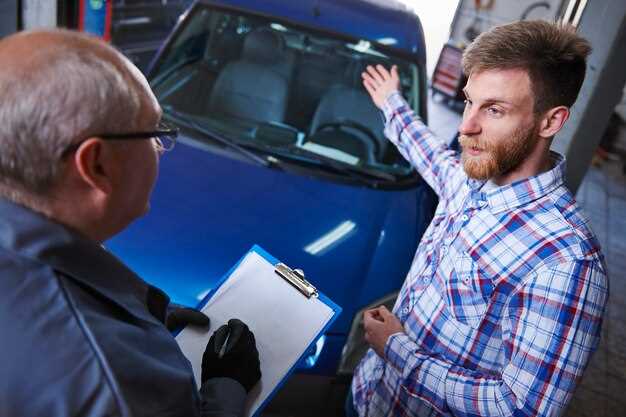
When your vehicle requires bodywork due to an accident or damage, understanding the auto body repair process is crucial for managing your expectations. Whether it’s a minor dent or significant structural repair, being informed can help you feel more confident and at ease during this necessary inconvenience. This article will guide you through the key stages of auto body repair, ensuring you know what to expect every step of the way.
The journey typically begins with an initial assessment, where a technician evaluates the extent of the damage. This evaluation leads to an estimate, detailing the necessary repairs and costs involved. Depending on the severity of the damage, repairs can take anywhere from a few days to several weeks. It is essential to ask questions during this phase to clarify any uncertainties regarding timeframes, insurance coverage, or rental car options.
Once the repair process starts, the team will disassemble the affected areas of your vehicle to fully access and fix the underlying issues. Quality workmanship is crucial during this stage, as it affects the durability and appearance of your car once the repairs are complete. Understanding that some parts may need to be replaced or painted can also help you anticipate the overall timeline.
Finally, before your vehicle is returned, it undergoes a thorough inspection to ensure all repairs meet quality standards and safety regulations. This stage is vital, as it guarantees that your car is not only restored to its pre-accident condition but is also safe for driving. By following this guide, you will be equipped to navigate your auto body repair process with greater confidence and satisfaction.
Understanding the Initial Assessment and Estimate Process
When you bring your vehicle to an auto body shop, the first step is the initial assessment. This process involves a thorough inspection of the damage to determine what repairs are necessary. Trained technicians will evaluate not only the visible damage but also underlying issues that may not be immediately apparent. They will examine the exterior, structural components, and any internal systems that may have been affected.
During the assessment, it is crucial for technicians to take detailed notes and photographs of the damage. This documentation will serve several purposes, including providing a reference for the estimate and ensuring transparency with the customer. The technician may also perform diagnostic tests to understand any functional impairments in the vehicle.
After the assessment, the next phase is generating an estimate. The estimate includes a breakdown of the necessary repairs, parts required, labor costs, and the overall timeline for completing the work. It’s important that this estimate is as accurate as possible to avoid any unexpected costs later in the repair process.
Factors that influence the estimate include:
- Extent of damage: More extensive damage typically results in higher costs.
- Parts availability: If special parts are needed, it can impact both time and expense.
- Labor rates: Different shops may have varying rates based on their expertise and location.
Once the estimate is prepared, it is presented to the vehicle owner. This step allows for an open dialogue where any questions or concerns can be addressed. It is essential to understand the details of the estimate and confirm with the shop about the repair process, timeline, and payment options before proceeding.
Overall, the initial assessment and estimate process lays the groundwork for successful repairs. A clear understanding during this stage can help manage expectations and contribute to a smoother repair experience.
The Step-by-Step Repair Timeline and Key Milestones

The auto body repair process is structured and typically follows a well-defined timeline with specific milestones that help track progress. Understanding these steps can provide clarity on what to expect during the repair of your vehicle.
First, the process begins with an initial assessment. This includes an inspection of the damage by a qualified technician who will evaluate the extent of repairs needed. This assessment usually takes about one to two days, depending on the severity of the damage.
After the assessment, an estimate is prepared. This document outlines the anticipated costs and timeline for the repairs. The estimate is then shared with the vehicle owner for approval. This step can take an additional day or two, as it may require discussions with insurance companies for coverage confirmation.
Upon approval, the repair shop will schedule the vehicle for repairs. This milestone marks the transition from planning to execution. The actual repair work begins here and can vary in duration depending on the complexity of the damage–ranging from a few days for minor repairs to several weeks for extensive work.
During the repair phase, several key tasks occur. These include dismantling affected parts, repairing or replacing damaged components, and repainting the vehicle to restore its appearance. Each of these tasks has its own timeline but typically takes about five to ten days collectively for medium damage.
Once the repairs are completed, a quality control inspection is conducted to ensure that all work meets safety and aesthetic standards. This crucial milestone takes one to two days, as technicians thoroughly check for any inconsistencies or issues before returning the vehicle to the owner.
Finally, once the vehicle passes inspection, the shop will notify the owner that the car is ready for pickup. This step signifies the completion of the repair process, and owners are encouraged to conduct their own inspection before final acceptance. This entire timeline can range from a week to several weeks, depending on various factors including parts availability and complexity of the repairs.
By understanding this step-by-step repair timeline and the key milestones, vehicle owners can have realistic expectations and better prepare for the duration of the repair process.
Post-Repair Care and Follow-Up Recommendations

After your vehicle has undergone auto body repair, it is crucial to ensure its longevity and optimal performance. Implementing proper post-repair care can help maintain the quality of the repair work and keep your vehicle in excellent condition.
Monitor Paint and Finish: In the days following the repair, inspect the paint and finish for any signs of imperfections such as runs, bubbles, or mismatched colors. If you notice any anomalies, contact the repair shop for a follow-up inspection.
Avoid Car Washes: For the first 30 days post-repair, avoid automatic car washes, especially those using brushes. Hand washing the vehicle with a soft cloth is advisable to prevent damage to the fresh paint.
Allow Proper Curing: Fresh paint and clear coats require a certain amount of time to cure fully. Ensure that you follow your repair shop’s recommendations regarding curing times before exposing the vehicle to extreme conditions or waxing.
Regular Waxing: Once the paint has fully cured, apply a high-quality wax to protect the finish. Waxing not only enhances the appearance of your vehicle but also creates a protective barrier against environmental elements.
Inspect Repairs: Regularly check the repaired areas for any signs of wear or problems. Look for rust spots, cracks, or peeling paint. Early detection can prevent further damage and costly repairs.
Follow-Up Appointment: Schedule a follow-up appointment with your repair shop if recommended. This allows professionals to assess the repair quality and make any necessary adjustments, ensuring everything meets industry standards.
Documentation: Keep all documentation related to the repair work, including warranties and receipts. This information is invaluable for future repairs or potential claims.
Driving Habits: Be mindful of your driving habits post-repair. Avoid rough roads and aggressive driving, which can place undue stress on new repairs and impact the overall performance of your vehicle.
By adhering to these post-repair care and follow-up recommendations, you can ensure that your vehicle remains in prime condition and that the auto body repairs last for years to come.

